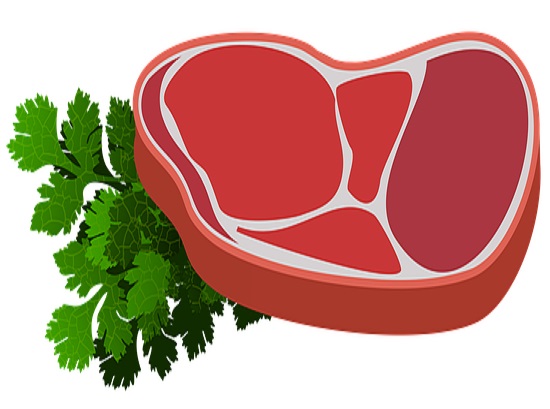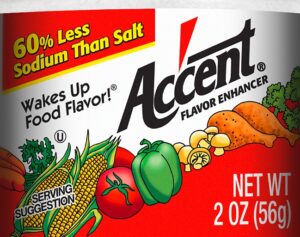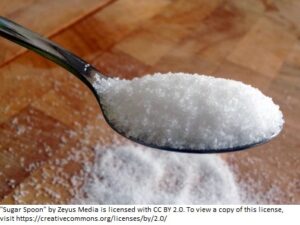
Enzymes - "Make it happen!"

What are Enzymes?
Composed of amino acids, enzymes are catalysts in various processes. E.g. in food, plants, laundry detergents, textile industry, and the human body
- Catalyze biological reactions that would not normally occur at physiological temperatures
- > 3000 enzymes identified – each with a specific function.
For example:
- Catalase – breaks down toxic ethanol in alcohol to non-toxic acetic acid
- RNA polymerase – used to transcribe DNA into RNA for making proteins.
- Lysosomal enzyme -the garbage disposal in every cell
- Protease – digests protein
Enzymes are relatively large, but their protein structures are fragile. Amino acids in the molecular chain link together to form certain patterns and shapes, giving enzymes their unique characteristics and functions. When something disrupts the chain’s structure and shape, the enzyme becomes “denatured” and loses its ability to perform. E.g. exposing them to temperatures > 116 â°F.
As catalysts, enzymes are not used up in a reaction
There are three types of enzymes:
- Digestive (extra-cellular enzymes) – help break down food for absorption and transport to cells
- Food based – enzymes in uncooked foods supply some of the body’s enzymes
- Metabolic / Systemic (intra-cellular enzymes) – involved with cell’s “in-house” reproductive and general functions
Your pancreas produces most of the digestive and metabolic enzymes. Obtaining enzymes from food lowers the burden on the pancreas to produce enzymes. Enzymes not used for digestion are then available for important metabolic processses
- Cooked / processed / fatty foods, aging and antibiotics deplete body’s enzymes
- Enzyme production rate starts declining around the age of 20 – added to which,age brings a decline in the stomach’s production of hydrochloric acid, which is needed to activate the stomach’s digestive enzymes
(1) Digestive enzymes
Most digestive enzymes are produced in the pancreas and released throughout the digestive tract – but digestion begins in the mouth with amylase in saliva breaking down carbs and mastication breaking down proteins
Enzymes in the digestive system. There are eight primary digestive enzymes, each purposed to help break down different types of food:
- Protease: Digests protein mostly in the stomac h (after mastication in the mouth)
- Amylase: Digests carbohydrates; in mouth, upper stomach, then the small intestine
- Lipase: Digests fats primarily in the small intestine
- Cellulase: Breaks down fiber
- Maltase: Converts complex sugars from grains into glucose
- Lactase:Digests milk sugar (lactose) in dairy products
- Phytase:Helps with overall digestion, especially B vitamin production
- Sucrase: Digests most sugars
Poor digestion often leads to GI disorders:
- Acid reflux / heartburn
- Constipation / Bloating /Cramping / Flatulence / Belching
Chronic malabsorption can lead to any number of illnesses
(2) Food enzymes
The major reason enzymes levels become depleted is that we eat mostly processed, irradiated and cooked food devoid of enzymes (most rendered inactive by exposure to temperatures over 116â° F)
- Raw food (picked ripe) contains enzymes that help break it down in the upper stomach – where it sits for 30 to 45 minutes. In the lower stomach the pancreas excretes more enzymes.
- Cooked, irradiated, processed food does not predigest in the upper stomach:
- When it reaches the lower stomach, the pancreas must make extra enzymes to try and break down the food (although cooked food is already somewhat broken down by the cooking process) -sometimes food can be left only partially digested.
- Eventually an overworked pancreas is no longer able to produce an adequate supply of enzymes – resulting in low enzyme levels for metabolic purposes -i.e. detoxification, energy production and for utilization by the immune system for fighting disease and eliminating cancer cells
- Pasteurizing dairy products denatures enzymes
Enzymes are better received from foods such as fresh-made juices and apple cider vinegar (ACV) rather than supplemented. Too many enzymes, as provided in a supplement, can promote a lazy pancreas. It is better to build up the body with nutrients and empower the pancreas. However, if you insist on a digestive supplement . . .
- Digestive enzymes must be taken WITH a meal
- Should include lipase, protease, and amylase enzymes
- A good DIGESTIVE enzyme brand: Dr. Mercola Digestive Enzymes
- Hydrochloric acid may need a supplemental boost too
(3) Metabolic / systemic enzymes
Metabolic enzymes are catalysts that speed up METABOLIC processes in the body
>3000 enzymes identified – each with a specific function (Each enzyme is described by a sequence of four numbers preceded by “EC” – The first number broadly classifies the enzyme based on its mechanism.)
- EC 1 Oxidoreductases: catalyze oxidation/reduction reactions
- EC 2 Transferases: transfer a functional group (e.g. a methyl or phosphate group)
- EC 3 Hydrolases: catalyze the hydrolysis of various bonds
- EC 4 Lyases: cleave various bonds by means other than hydrolysis and oxidation
- EC 5 Isomerases: catalyze isomerization changes within a single molecule
- EC 6 Ligases: join two molecules with covalent bonds.
Benefits of metabolic enzymes (which are mainly proteolytic) in body
- Detoxification
- Energy production
- Fighting disease/infections, healing wounds
- Reduce inflammation
- Oxygen absorption
- Toxic waste removal
- Dissolve clots
- Regulate hormones
- Anti-aging
- Involved in: Circulatory, lymphatic, cardiac, neurologic, endocrine, renal, hepatic, and reproductive systems
- Maintain skin, bones, joints, muscles
Some enzymes need coenzymes to function – E.g. CoQ10, magnesium, zinc
Systemic proteolytic enzymes
Most enzymes are proteolytic – meaning they catalyze the splitting of proteins. These category EC 3.4 enzymes usually act on peptide bonds between amino acids, in a reaction called dehydration synthesis, which releases a molecule of water
When available, the body uses proteolytic enzymes (proteases ) to alleviate many health problems and address several areas of concern:
- Blood clots
- Cancer
- Scars
- Fibrosis
- Any inflammatory disease E.g. heart disease, arthritis
- Pain E.g. sports injuries
- Detoxification / Clean-up (Break down protein fragments and microbes in blood)
- Immune function
- Anti-aging
- Decrease side-effects of chemo and radiation
For information on the best way to boost body’s proteolytic enzymes
How to boost body’s protease enzymes using food, supplements or other methods
FUNCTIONS OF SYSTEMIC PROTEOLYTIC ENZYMES IN THE BODY | |
| Detoxification | Proteolytic enzymes break down protein-based foreign-bodies in the circulatory and lymph systems. E.g. bacteria, fungi, parasites,the viral capsid (enables them to bond to DNA), protein fragments for elimination from the body |
| Break down fibrin |
|
| Reduce inflammation / pain | Proteolytic enzymes remove excess circulating immune complexes (CICs) or prostaglandins that perpetuate inflammation:
|
| Boost immune function |
|
HEALTH PROBLEMS AVERTED OR TREATED BY SYSTEMIC /PROTEOLYTIC ENZYMES | |
| Decrease side-effects of chemo and radiation |
|
| Heart disease | Proteolytic enzymes fight heart disease better than NSAIDS (E.g. aspirin, Ibuprofen) and without their side-effects (used long-term, NSAIDs damage GI tract mucosa (lining). Especially in the stomach and upper intestine (leading to peptic ulcers), and can cause renal damage).
|
| Other vascular diseases | Thrombosis, phlebitis, and varicose veins. |
| Cancer | John Beard believed pancreatic enzyme deficiency impairing immune function was the root cause of cancer John Beard. (1911) THE ENZYME TREATMENT OF CANCER AND ITS SCIENTIFIC BASIS
|
| Most inflammatory or autoimmune diseases |
|
| Anti-aging | Proteolytic enzyme therapy effect against aging is attributed to restoring depleted enzyme levels |
| Injuries |
|
References
Beaufort, E. (1990) Reduction in the adverse effects of radiation therapy with hydrolytic enzymes. Therapeutikon 10, 577-580.
Desser, L., Ransberger, A. (1990) Introduction of tumor necrosis factor in human peripheral-blood mononuclear cells by proteolytic enzymes. Oncology 47, 475.
Gonzalez NJ, Isaacs LL. (1999) Evaluation of pancreatic proteolytic enzyme treatment of adenocarcinoma of the pancreas, with nutrition and detoxification support. Nutr Cancer. 33(2):117-24.
Konig, W. (1989) Enzyme therapy in the treatment of viral diseases and carcinoma. Erfahrungsheilk. 38, 455-459.
Rosanova, A.(1964) The present stand of enzyme therapy in the treatment of malignant tumors. Arztl Praxis XVI 36, 1442-1444.





















































